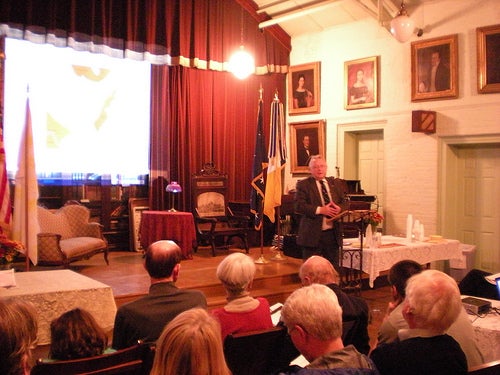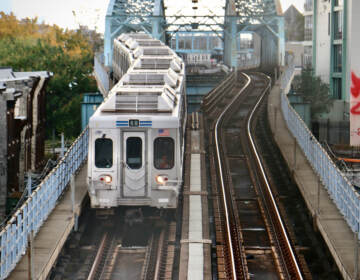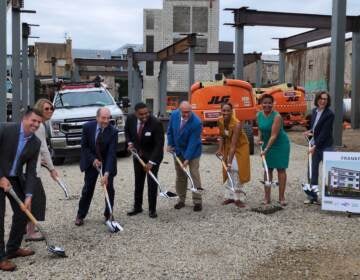Historical Society of Frankford celebrates National Historic Trail distinction for Frankford Avenue

Ralph D. Nelson almost forgot his tri-cornered hat.
But just before he took the podium, the long, tall, graying Delaware-based historian placed the 18th-century-style cap on his head.
For years, Nelson has been among dozens of Revolutionary War buffs calling for greater acclaim for a 685-mile route along the East Coast that many say helped lead the colonies from fledgling collective to global superpower. See a map here.
Back in March, Nelson got his wish when President Obama signed into law a public management act that made the Washington-Rochambeau Revolutionary Route — nicknamed W3R — a National Historic Trail.
Tuesday night was just gravy.
More than 60 attended an event held last night at the Historical Society of Frankford on Orthodox Street, just blocks from where the W3R trail winds through Northeast Philadelphia, by way of Frankford Avenue. The night was highlighted by a short lecture from noted American Revolution historian Dr. Robert Selig.
To kick off the event, held inside the historical society’s beautiful, renovated-church location, Nelson and three other members of the Philadelphia-Continental Chapter Sons of the American Revolution Color Guard followed leader Jim Willis in a traditional flag processional, which can be seen below. Nelson operates a Web site for the trail, which can be seen here.
The cool November evening was even more reason to keep the crowd of history lovers buoyant, already riding high on the national recognition for the trail that runs the length of Frankford Avenue through Old City, as part of the route that the allied French and colonial forces traveled in 1781 from Newport, Rhode Island, to Virginia and the decisive Siege of Yorktown.
“We’re here to celebrate that distinction,” said historical society secretary Patricia Coyne. Those involved are hoping to get government funding to hang banners throughout the Philadelphia portion of the trail like this donated version.
Selig, the night’s keynote speaker, spent a half-hour combing through an interesting slide presentation stuffed with details on that 1781 trip, suggesting throughout just why France would take any interest in “a land populated by savages, beavers and bear.”
He contends that in addition to their desire to weaken long-time rival England, French leaders wanted the British to return to European interests, as he mentions in the brief video clip below.
Selig also took great pains to try to convey just how impressive that 1781 trip of at least 6,000 men, hundreds of wagons and thousands of horses, stretching four miles must have been.
“It would have taken hours to watch the men come by right outside here in Frankford,” Selig said with a voice that rose and fell with a captured audience. “And they wouldn’t have survived without being fed, without the support of this and all the communities along the way.”
Joe DiBello, the trail’s Old City-based National Park Service superintendent, was in attendance, as was Honorary Consul of France in Philadelphia and Wilmington Michael Scullin and Ursula Reed, the vice president of Pennsylvania’s portion of the Washington-Rochambeau Revolutionary Route.
The night was sponsored by St. Mark’s Episcopal Church on Frankford Avenue and several chapters of the Daughters of the American Revolution, including the inaugural Flag House Chapter, which was founded in Frankford more than 100 years ago.
Below, watch historian and Sons of the American Revolution member Dr. Ralph D. Nelson discuss four different flags present in the Revolutionary War.
WHYY is your source for fact-based, in-depth journalism and information. As a nonprofit organization, we rely on financial support from readers like you. Please give today.






